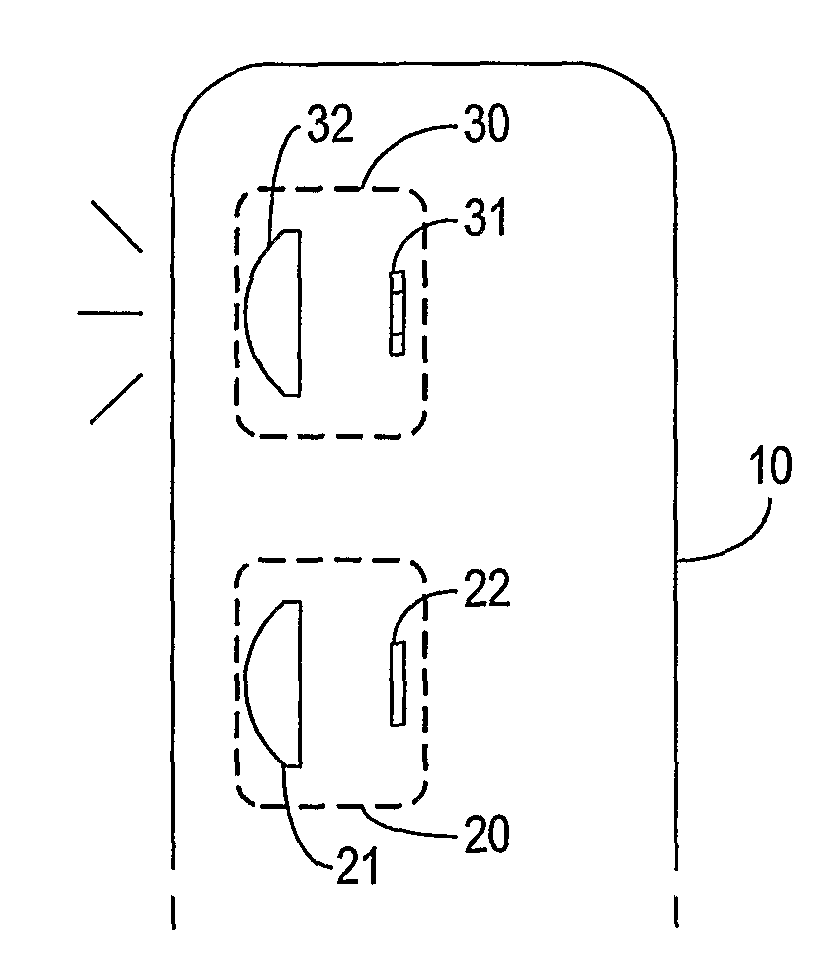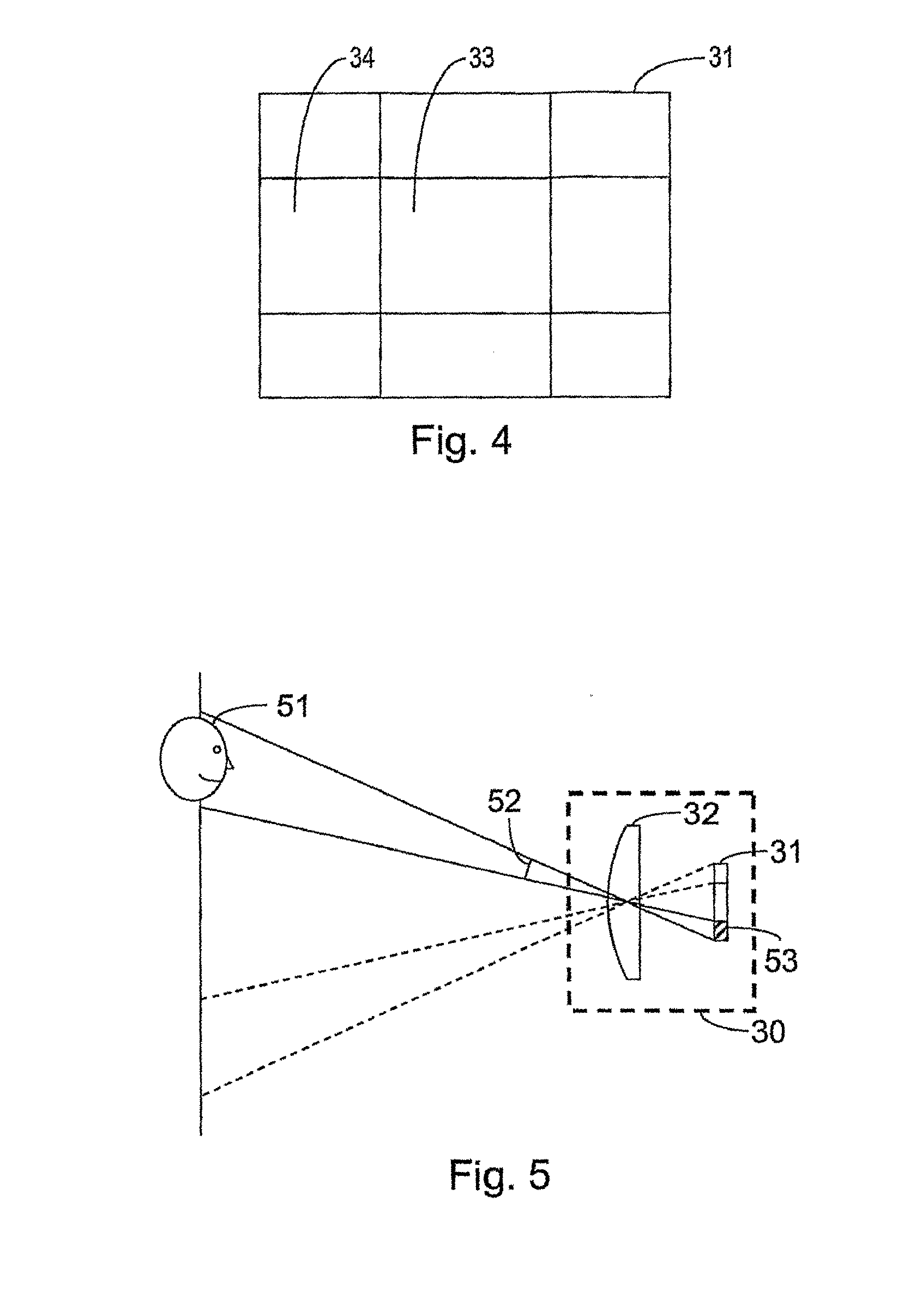Optical Device
a technology of optical devices and flashing devices, applied in the field of optical devices, can solve the problems of limited available space, unsuitable for such use, and the flashing of zoom flashes described above with a focusing device, and achieve the effect of less sensitive to mechanical shock and precise adjustmen
- Summary
- Abstract
- Description
- Claims
- Application Information
AI Technical Summary
Benefits of technology
Problems solved by technology
Method used
Image
Examples
Embodiment Construction
[0032]In FIGS. 1 and 2 is shown the contour of a mobile telephone 10 with a camera 20 or other means for taking photographic images and an illumination device 30 that can be controlled to emit light for illuminating an object to be photographed by the camera 20. The mobile telephone 10 has means for wireless voice communication, which are not shown.
[0033]The camera 20 comprises an imaging lens 21 arranged in an imaging relationship with a light sensitive element 22 so as to project light from the object onto the light sensitive element to form an image of the object thereon. In the illustrated example the light sensitive element 22 is e.g. a charge-coupled device (CCD), and the images taken are digital images. Alternatively, the light sensitive element comprises a film with a light sensitive emulsion on a carrier.
[0034]The digital camera 20 is capable of zooming, i.e. varying the opening angle, i.e. the spatial angle within which objects are imaged on the light sensitive element 22....
PUM
 Login to View More
Login to View More Abstract
Description
Claims
Application Information
 Login to View More
Login to View More - R&D
- Intellectual Property
- Life Sciences
- Materials
- Tech Scout
- Unparalleled Data Quality
- Higher Quality Content
- 60% Fewer Hallucinations
Browse by: Latest US Patents, China's latest patents, Technical Efficacy Thesaurus, Application Domain, Technology Topic, Popular Technical Reports.
© 2025 PatSnap. All rights reserved.Legal|Privacy policy|Modern Slavery Act Transparency Statement|Sitemap|About US| Contact US: help@patsnap.com



